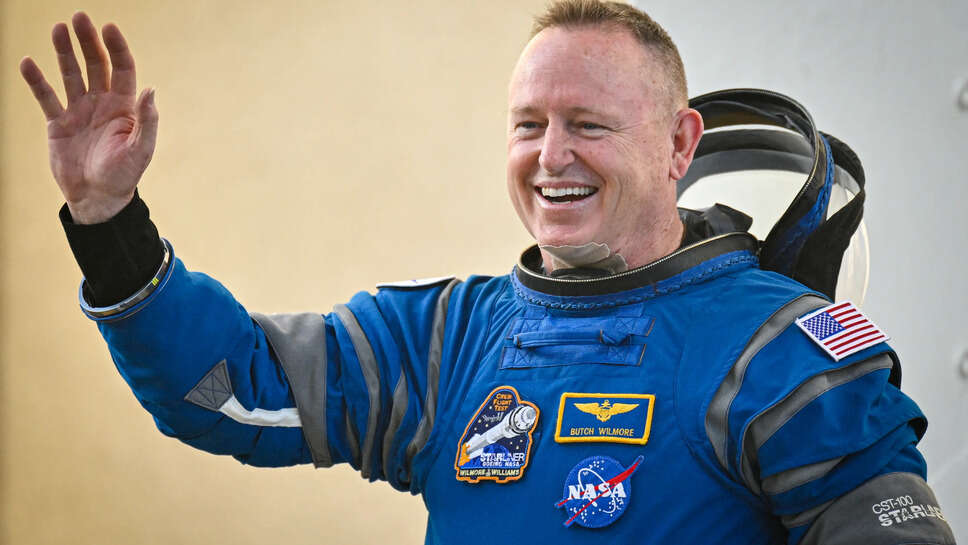From the ISS to Retirement: Butch Wilmore Concludes Stellar NASA Journey

In a remarkable conclusion to an extraordinary space career, veteran NASA astronaut Butch Wilmore has officially retired from the space agency after a momentous nine-month mission aboard the International Space Station (ISS). His departure marks the end of a distinguished tenure that has not only helped push the boundaries of space exploration but has also inspired a generation of future explorers.
Wilmore’s most recent mission, a nearly nine-month-long stay in orbit, served as both a technical milestone and a testament to human endurance in space. His retirement, while anticipated, brings with it reflection on decades of commitment, courage, and contributions to science, technology, and humanity’s presence beyond Earth.
A Career Carved in the Cosmos
Butch Wilmore, a decorated naval aviator and test pilot before joining NASA, entered the astronaut corps in 2000. Over the next 24 years, he would evolve into one of NASA’s most seasoned astronauts, participating in multiple missions, spacewalks, and leadership roles aboard the ISS.
Wilmore first flew to space in 2009 aboard the Space Shuttle Atlantis during the STS-129 mission, delivering critical spare parts to the ISS. He returned to the space station in 2014 for a longer mission, spending over five months in orbit and performing two spacewalks. His calm demeanor, leadership capabilities, and technical knowledge made him an ideal choice for extended missions.
His latest and final mission was a groundbreaking one — a nine-month stay aboard the ISS, which tested long-duration space habitation, systems reliability, and physiological responses to microgravity over extended periods. This mission also came during a pivotal time for NASA and its partners, as it continues preparing for future Artemis missions to the Moon and, eventually, Mars.
Commanding Space with Calm and Clarity
Wilmore was known for his composed, focused presence even during high-stakes operations. As commander on the ISS, he led international crews through scientific research, maintenance tasks, and system upgrades critical to sustaining life and operations aboard the station. He was a key contributor in implementing new solar arrays, enhancing data communication systems, and managing experiments related to human biology and material science.
His ability to integrate operational discipline with human connection was noted by both his peers and ground teams. Many younger astronauts cited Wilmore as a mentor and a stabilizing figure — someone who embodied NASA’s values while fostering collaboration and resilience in space.
The 9-Month Mission: A Testament to Human Endurance
Wilmore’s final journey to the ISS was originally planned as a shorter-duration stay but was extended due to various scheduling and operational needs. The extension offered NASA a unique opportunity to gather valuable data on human performance, health, and adaptability during long-duration space missions — data that will inform upcoming missions to the Moon and Mars.
During this time, Wilmore and his crew conducted hundreds of experiments ranging from cellular aging and drug resistance to artificial intelligence-based robotics. They also performed critical repair and system optimization tasks, ensuring that the station remained fully functional for future occupants.
Perhaps more importantly, Wilmore served as a living example of the psychological and emotional resilience needed for extended spaceflight. His regular communications with school children, students, and families back on Earth highlighted his commitment to education and public outreach, even from hundreds of kilometers above the planet.
A Life Beyond the Atmosphere — and Now, Back to Earth
With his return and official retirement, Wilmore closes a chapter that has been defined by constant evolution — from fighter pilot to test pilot, from space shuttle crew to long-duration ISS commander. His total time in space now exceeds 500 days, placing him among the elite few astronauts who have spent more than a year in orbit across multiple missions.
NASA Administrator and colleagues have paid tribute to Wilmore’s contributions. He is widely seen as a cornerstone figure in the transition from the Shuttle era to the ISS era and now into the Artemis age. His legacy, they say, is not just in hours logged or missions completed, but in the way he upheld and advanced the spirit of exploration.
Looking Forward: The Next Chapter
Though retiring from NASA, Wilmore’s journey may not be over. Like many retired astronauts, he is expected to contribute his expertise to advisory roles, consulting, or even public speaking and education. His unique experience — particularly the insight gained during long-duration missions — will be invaluable to aerospace organizations, space medicine research, and future astronaut training.
There’s also speculation that Wilmore could take on a leadership or mentorship role within private aerospace companies, many of whom are working in close collaboration with NASA. Given his experience across both government missions and joint commercial efforts, he’s well-positioned to help shape the next frontier of spaceflight.
The Legacy of a Humble Hero
While Wilmore’s career is filled with achievements, he has remained remarkably humble throughout. In past interviews, he’s often credited his success to teamwork, preparation, and faith. For many within NASA and beyond, he represents the kind of astronaut who embodies not just skill, but humility — a servant-leader among the stars.
As Earthbound life begins again for Butch Wilmore, one thing is clear: his legacy will continue to orbit within the space community. Future astronauts may one day walk on the Moon or Mars thanks, in part, to the foundations he helped build — through grit, grace, and an unwavering belief in humanity’s future in space.
Closing Thoughts
Wilmore's retirement doesn’t mark an end, but rather a continuation of his impact in new and possibly unexpected ways. He’s lived among the stars, contributed to science and international cooperation, and inspired countless individuals across the globe. While he may no longer wear the NASA badge, the story of Butch Wilmore will remain stitched into the fabric of space history.
The sky was never the limit for him — just the beginning.
